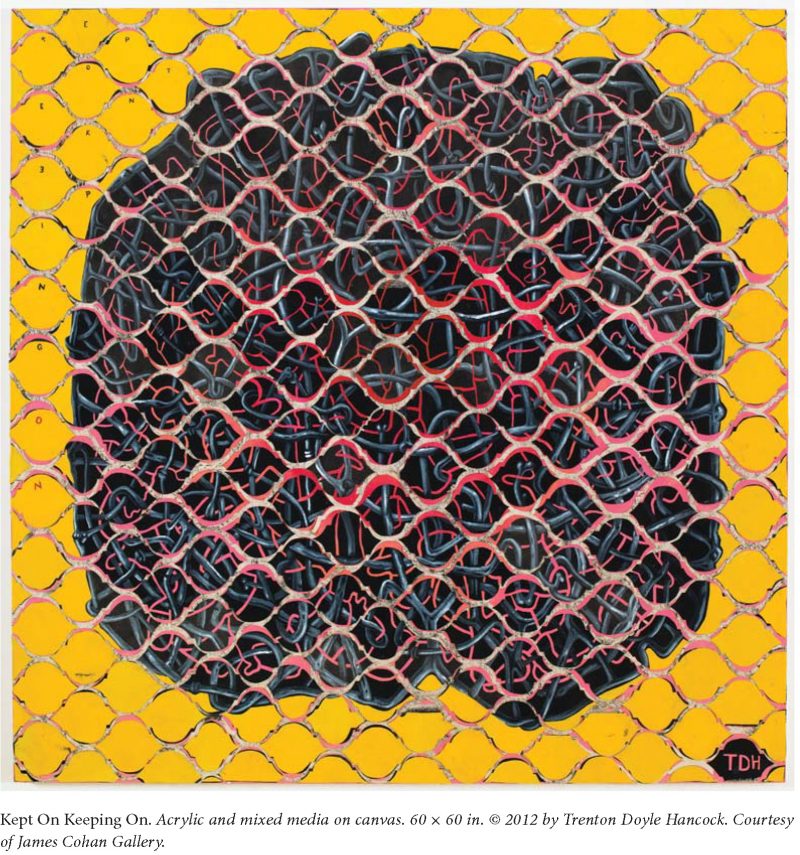Trenton Doyle Hancock is a multifaceted artist whose practice embraces drawing, painting, and collage as well as set design, comic books, and a huge collection of toys. The painting in question brings to the fore a fascination with text and a passionate approach to his long-standing exploration of both personal and universal narratives.
—Scott Zieher

THE BELIEVER: Are we looking at an abstraction through a chain-link fence? Is it a self-portrait? Are we looking at a self-portrait through a chain-link fence?
TRENTON DOYLE HANCOCK: In the case of this painting, “fence” and “portrait” may be literalizing the reading too much, although it’s hard to escape that reading when seeing the work digitally. When viewed in person, it’s hard to un-see the layers of material that hold the image together. What seems to be a fence becomes raw material, and what appears as pink veins is revealed to be the underpainting or the support. It is a painting about timing. I built it as a visual game to figure out what comes first and what comes third. As a self-portrait, it has nothing to do with local likeness and everything to do with revealing a calculative and manipulative psychology.
BLVR: There seems to be a new approach in a good portion of the works in your recent show in New York. How did you arrive at the idea of obfuscation and obliteration of subjects as we see in the painting at hand and a half dozen others in the show?
TDH: After having battled through a four-year transitional period in my studio, I found that there were a handful of tropes, colors, and forms that I could repurpose toward the new body. In order to keep the studio fresh, I stripped away the assigned ranks of these old forms. Then the process of reassigning meaning and reconfiguration began. I felt as though I was coming to understand myself differently with this body of work and that I was comfortable with not knowing things. Maybe this admittance of blank becomes embedded in the forms and contributes to the air of obfuscation you mentioned. Even when the work was entrenched in the narrative, things were inching toward a more mysterious place. With these works, I also began to use my love of textile design in a different way. I’ve been exploring the idea that patterns can form some kind of a mask or visual interference.
BLVR: So many of your works hinge on a single visual image, a self-portrait or figure, a palindrome or piece of text, but here we are presented with something on the verge of abstraction.
TDH: I see this painting as not so different from past works in the...
You have reached your article limit
Sign up for a digital subscription and continue reading all new issues, plus our entire archives, for just $1.50/month.
Already a subscriber? Sign in




